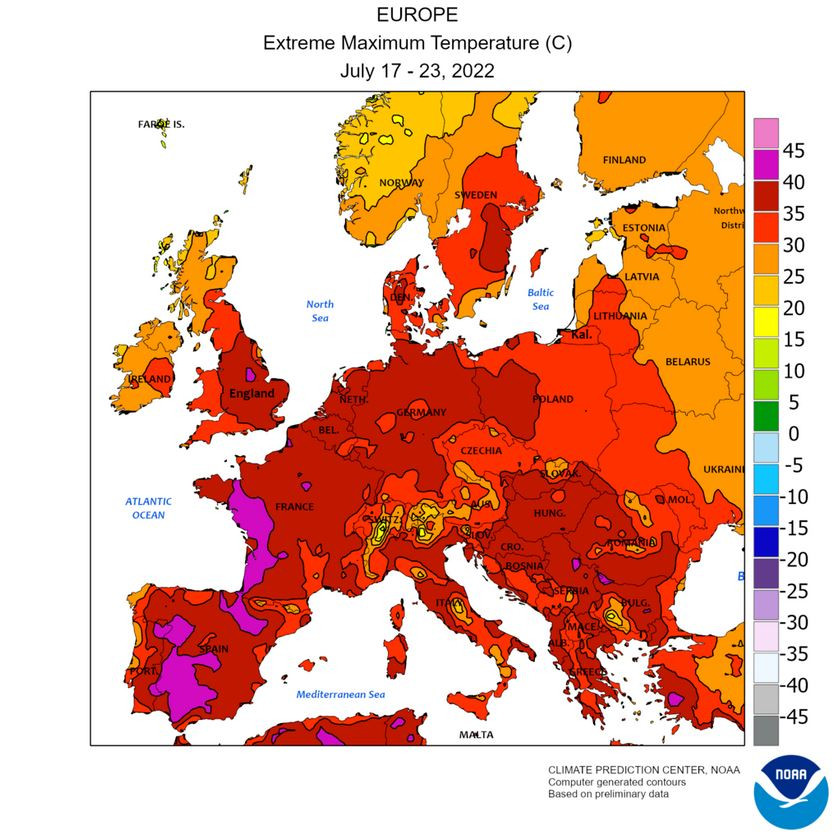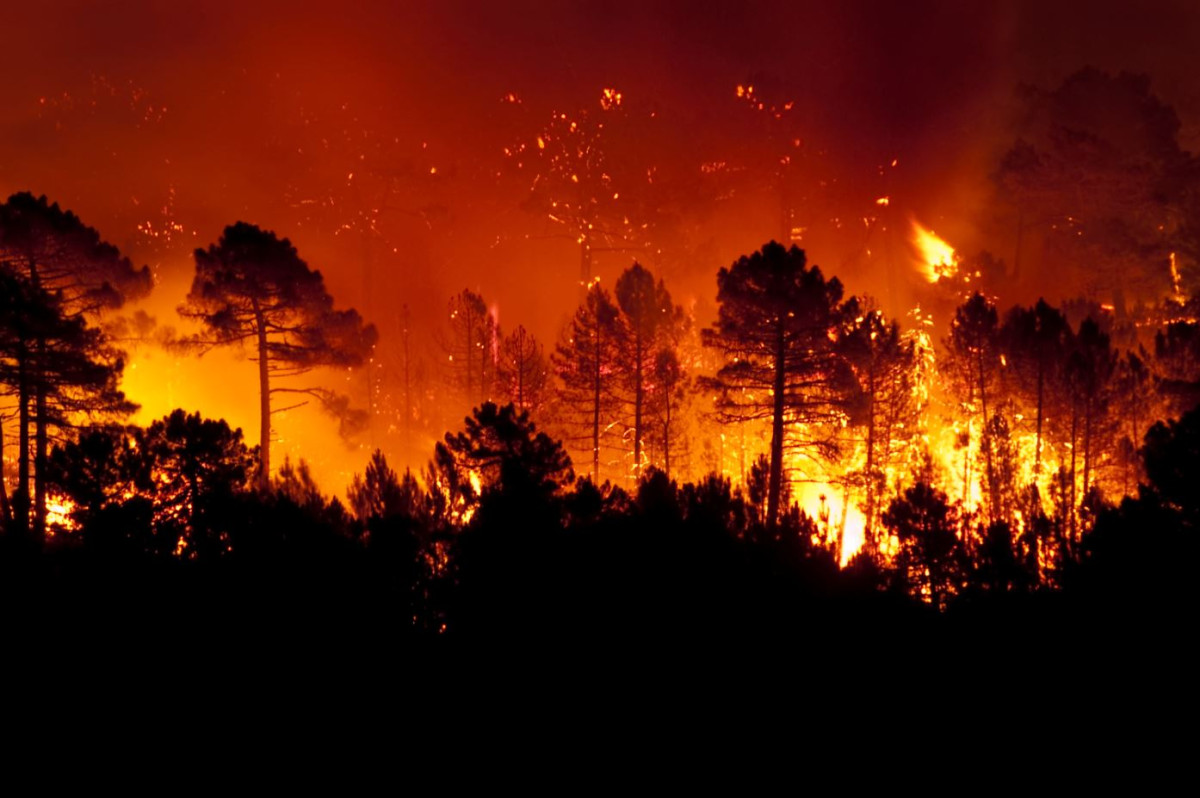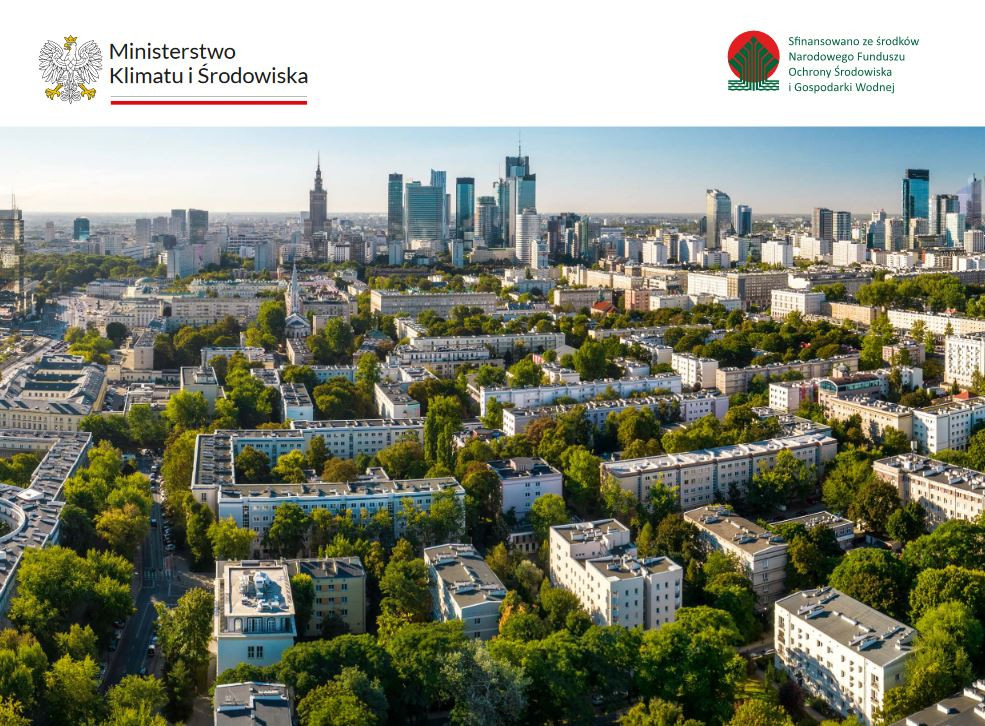Lack of coordination and monitoring slows climate adaptation in Poland
***Please note: This factsheet is part of a stocktake of climate adaptation efforts in Europe. Also read the main article Extreme weather forces unprepared Europe to focus on climate adaptation, the Q&A - Why Europe needs to adapt to the impacts of climate change, as well as the factsheet Europe steps up climate change adaptation in wake of floods and heatwaves.***
Heat waves double within a decade
Poland, like other European countries, is already suffering from more frequent and more severe droughts and floods, as well as heat and frost waves. From 2010 to 2019, droughts occurred twice as often as in previous decades, with the agricultural sector most impacted. In the years to come, Poland will also have to deal with shrinking water resources, intensifying coastal erosion, and many other climate-related challenges, according to research by the Institute of Environmental Protection, a government body supervised by the Climate and Environment ministry.
Poland already loses an average of PLN 6 billion (€ 1.3 bln) per year due to extreme weather events, the institute said at the end of last year in its “Atlas of the effects of extreme phenomena in Poland”. In less than two decades, direct damages added up to around PLN 115 billion (€24 bln), according to the calculations.
](https://www.cleanenergywire.org/sites/default/files/styles/paragraph_text_image/public/paragraphs/images/adaptation-climate-losses-eu_0.jpg?itok=BoJhuV3m)
Adaptation strategy dates back to 2013
Climate adaptation activities in Poland are mainly implemented by the Ministry of Climate and Environment (MKiS), which adopted a “strategic adaptation plan for sectors and areas sensitive to climate change until 2020, with a perspective until 2030”, in 2013. The document sets out what adaptation measures can be made in areas such as water management, agriculture, forestry and biodiversity, as well as urbanised areas, among others. An adaptation strategy for the following years is currently under development.
Similarly, in 2019, the ministry released an environment strategy focusing on ecosystem development and water management. The government has also prepared a draft act to strengthen the climate dimension of urban policy. These papers served to identify the main climate change risks for Poland, make support available for cities, and set up a network to facilitate better cooperation among organisations in different sectors.
Poland’s adaptation measures are financed both directly by the government and various EU programmes, for example the LIFE instrument for the environment and climate action, and its Horizon research and innovation programme. The funds are channelled to the national, regional and local levels via the National Fund for Environmental Protection and Water Management, a government agency under the climate and environment ministry, and other mechanisms.
Lack of coordination and cooperation
The biggest barrier to more effective climate adaptation in Poland is the lack of coordination and cooperation at national, regional and local levels, and the lack of a body responsible for monitoring activities at the national level, according to the Ministry of Climate and Environment. Experts say an update to the 2013 national adaptation strategy could help overcome these problems.
“The administrative structure and division of competences make it difficult to establish and implement integrated adaptation policies across administrative divides, making it difficult to respond to risks. The inflexibility of this structure means a lack of resilience to climate change”, said Małgorzata Hajto, Head of the Department of Environmental Assessment, Nature Conservation and Landscape Protection at the Institute of Environmental Protection.
“Without an effective spatial planning system, we are not only failing to adapt to climate change, we are also increasing the risks associated with hazards - particularly drought, floods, or threats in the Baltic coastal zone,” she added.
There is also a lack of awareness of the need for climate change adaptation - for example using so-called “blue-green infrastructure” involving natural solutions - among Polish citizens, officials, and contractors involved in urban investments. The ministry plans to combat this problem by carrying out specialised training for town hall employees which covers an inventory of natural resources, the potential for green development and green-blue infrastructure in Polish towns, among other topics.
The level of awareness is slowly increasing as the government has started to look at how climate change will, for example, impact health. High temperatures (especially in urban areas) contribute to deaths from cardiovascular and respiratory diseases, and increase pollen and allergens, for example.
“Elements of greenwashing”
Despite some recent progress, climate adaptation is still not yet sufficiently embedded in the consciousness of decision-makers at local and governmental level, nor in the general public, says Iwona Wagner, Professor at the University of Lodz, UNESCO Chair of Ecohydrology and Applied Ecology.
“Climate adaptation mostly involves large cities, and there is a growing interest in smaller towns. Sometimes there are elements of greenwashing in urban plans,” Wagner told Clean Energy Wire. “Action in rural areas and in agriculture is still insufficient, even though adaptation is a necessary measure due to the increasing drought. Both in agricultural and natural areas, the key role of maintaining and rehabilitating biodiversity, as well as the related benefits, are still undervalued in Poland,” she said, adding that the benefits also have a financial, social and economic dimension. Wagner also pointed to a lack of regulation which impedes implementation.
Climate-resilient cities
Climate adaptation in Poland is often limited to rainwater management and the restoration of green areas in cities, Wagner said. It should instead become a systemic solution that includes all areas and sectors such as industry, transport and energy.
The country has launched several key programmes supporting local climate adaptation. The first is the project “Developing plans for adaptation to climate change in cities with a population above 100,000 inhabitants”, which aims to increase the resilience of 44 major cities to climate change. Each city has received an analysis of its climate risks and the sectors most vulnerable to the impacts of climate change.
Another innovative programme is “My Water”, where households can receive funding to invest in water storage to reduce the effects of droughts.
The “City with Climate” project, which was first implemented in 2020, supports local governments with climate and nature transformation, including improving the quality of life of residents. The government has in recent years also implemented initiatives such as “No more concrete in city centres”, which aims to reduce the phenomenon of urban heat islands by increasing the level of water retention and greenery.
Local authorities can also benefit from the “Guide for Cities: Natural-Climate Indicators for Sustainable Urban Development”. The guide provides a step-by-step description of how to calculate indicator values for green space and urban retention, impervious surfaces (concreted), urban heat islands, and biodiversity. Many cities, including Gdańsk, Krakow, Poznań, Wrocław and Warsaw are already starting to swap concrete and tarmac for vegetation.
Waterway adaptation
Other projects already in place to help with climate adaption include river restoration measures in the Biebrza Valley, in northeastern Poland. The area faces worsening droughts and decreasing water levels, and is included in the EU’s Natura 2000 network of core breeding and resting sites for rare species. As part of the project, active since 2011, work was carried out to restore the original hydrological conditions in the middle basin of the Biebrza Valley. The flow of water in the original riverbeds was restored and increased, while the natural water system was restored and the degradation of peat soils and habitats for valuable fauna and flora halted. The second phase of the project is currently underway.
Another project is the eco-hydrological rehabilitation of the “Arturówek” (2011-2015), a recreational reservoir in Łódź, which is a model approach to the rehabilitation of urban reservoirs in Poland. Thanks to biofiltration of rainwater, it can be used for recreational purposes. As a result of the measures, the quality of the water in the reservoirs and in the River Bzura has improved. The researchers won plaudits from the European Commission in the form of a "Best LIFE projects" award. A similar project is being implemented in the city of Radom, in east-central Poland.




